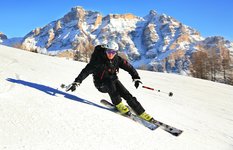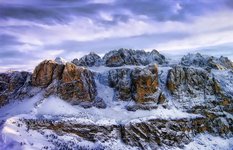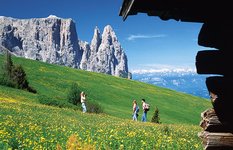 Been there
Been there
 Want to go
Want to go
 Ask friends for recommendations
Ask friends for recommendations
Things to do
- Skiing, snowboarding and cross-country skiing in the winter
- Hiking, mountain biking, road cycling in the summer
- Whitewater rafting, kayaking
- Rock climbing, ice climbing, mountaineering
- BASE jumping, paragliding and other crazy stuff
- Hiking, mountain biking, road cycling in the summer
- Whitewater rafting, kayaking
- Rock climbing, ice climbing, mountaineering
- BASE jumping, paragliding and other crazy stuff
Attractions and sights
 View Map
View Map
-
Perhaps, the most beautiful mountains in the world. Stunning views, cozy villages, hiking and climbing in the summer; great skiing in the winter -- World Cup races are often held there. Famous traditional wood carving.

-
In the winter, the entire South Tyrol turns into one huge ski resort comprised of 12 ski areas and 1,200 km of well-groomed ski slopes (on one skipass)

-
Europe's largest Alpine plateau, 8 mi wide, 20 mi long, and soaring up to 6,500 ft / 2,000 m high, Alpe di Siusi is dotted by farm huts and wildflowers, surrounded by dramatic — if distant — Dolomite peaks and cliffs. Popular hiking and walking destination

-
The most famous, fashionable and expensive Italian ski resort. The site of the 1956 winter Olympics. It is crowned by imposing peaks.

-
A via ferrata (Italian for "iron road") is a protected climbing route with steel cables, iron rungs, pegs, carved steps and even ladders. Thus via ferrata allow otherwise dangerous routes to be undertaken by lay hikers (not, however, afraid of heights). They were first built to move troops during the World War I, then maintained and upgraded. There are over 200 via ferrata in the Dolomites.

-
The Road of 52 tunnels is a military mule road built during World War I. It is 4 mi / 6.5 km long, of which one-half is tunnels. The impressive N. 20 is carved out of a rock tower, and to overcome the difference in height, twists around itself like a corkscrew.

-
South Tyrol Museum of Archaeology was specifically established to house "Ötzi", a well-preserved natural mummy of a man from about 3300 BC recently found frozen in a glacier. This is the world's oldest natural human mummy. The world's oldest complete copper age axe was found among his extensive equipment which also comprised a rather complex fire lighting kit and a quiver loaded with twelve arrows, clothing and a flint knife complete with its sheath. The body is held in a climate controlled chamber at a temperature of -6 Celsius and 98% humidity, replicating glacier conditions in which it was found.

More attractions
 Hide Map
Hide Map
When to go
| |||||||||||||||||||||||||||||||||||||||||||||||||||||||||||
How to get there
By car, from the following airports:
- Venice: 100 mi / 1 hr 45 min
- Munich: 200 mi / 3 hr
- Milan: 220 mi/ 3.5 hr
- Venice: 100 mi / 1 hr 45 min
- Munich: 200 mi / 3 hr
- Milan: 220 mi/ 3.5 hr
Nearby destinations:
Solden
Innsbruck
Venice
Kitzbuhel
Scuol
Ischgl
St. Anton - Lech
St. Moritz
Ski Amade, Styria
Davos
Salzburg
Hallstatt & Salzkammergut
Munich
Laax
Milan
Similar destinations:
Chamonix-Mont-Blanc
French Alps - Tarentaise Valley
Solden
St. Anton - Lech
Ischgl
Reviews




























